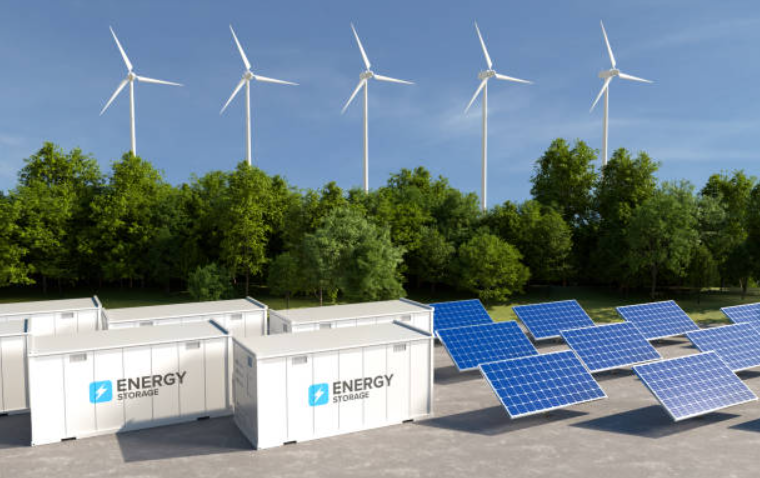As renewable energy adoption rises, the integration of battery storage with solar systems has become a game-changer for energy reliability and efficiency. Programs worldwide are now offering incentives for battery storage integration to encourage consumers to adopt this sustainable technology. These incentives—ranging from financial rebates to performance-based benefits—not only enhance grid stability but also help homeowners and businesses maximize their self-consumption of solar energy.
This article dives into the importance of battery storage integration, the types of incentives available, and how programs like those in the U.S. and Germany are leading the way.
What is Battery Storage Integration and Why Does it Matter?
Understanding Battery Storage Integration
Battery storage integration refers to combining solar power systems with energy storage solutions. This allows for:
• Storing excess solar energy generated during the day.
• Using the stored energy during peak hours or at night.
• Reducing reliance on the grid and ensuring energy availability during outages.
For example, systems like the Tesla Powerwall and LG Chem battery are popular for residential setups, offering consumers independence and significant cost savings.
Key Benefits
• Energy Independence: Reduces dependence on fluctuating grid energy prices.
• Grid Stability: Mitigates strain on the grid during high-demand periods.
• Cost Savings: Maximizes self-consumption of solar energy, reducing electricity bills.
Types of Incentives for Battery Storage Integration
1. Financial Incentives
Governments and utilities provide financial incentives to lower upfront costs, making energy storage more accessible.
• Rebates: Some states, such as California, offer direct rebates through the Self-Generation Incentive Program (SGIP). For example, SGIP provides up to $850 per kilowatt-hour (kWh) for energy storage systems.
• Tax Credits: The U.S. Federal Investment Tax Credit (ITC) covers 30% of the costs for solar-plus-storage installations.
2. Tariff-Based Incentives
• Feed-in Tariffs: These allow homeowners to earn money by exporting surplus stored energy to the grid at favorable rates.
• Time-of-Use (TOU) Rate Benefits: Encourages energy use during off-peak hours when prices are lower.
For instance, in Germany, feed-in tariffs for battery-integrated solar systems are designed to promote renewable energy self-consumption.
3. Grants and Subsidies
Governments worldwide are offering grants to accelerate battery storage adoption:
• Germany’s KfW Development Bank Program: Provides financial support for residential battery storage systems.
• Australia’s Home Battery Scheme: Offers rebates of up to $6,000 for eligible households installing battery storage.
4. Performance-Based Incentives
Utilities reward customers based on the efficiency and performance of their storage systems. For example, programs like SGIP in California offer additional incentives for low-income households and critical infrastructure projects.
Examples of Battery Storage Incentive Programs
United States
1. California SGIP
• Offers tiered incentives for residential and commercial battery storage.
• Prioritizes low-income households and those in fire-prone areas.
2. Massachusetts SMART Program
• Incentivizes combined solar and battery storage installations.
• Provides additional benefits for community solar projects.
Germany
1. KfW Bank Subsidies
• Covers up to 30% of the cost for battery storage systems.
• Encourages consumers to enhance solar energy self-consumption.
2. Feed-in Tariffs
• Homeowners receive financial compensation for exporting stored energy to the grid.
How Incentives Enhance Grid Reliability and Energy Use
Improved Grid Stability
Battery storage reduces grid strain during high-demand periods by:
• Shifting energy consumption to off-peak hours.
• Preventing overloads and potential blackouts.
A study by the National Renewable Energy Laboratory (NREL) showed that widespread battery storage adoption could reduce grid instability by 20%.
Maximized Self-Consumption
By incentivizing energy storage, consumers are encouraged to use stored energy rather than exporting it, further reducing reliance on fossil-fuel-driven grid power.
Challenges to Battery Storage Adoption
Eligibility and Cost Barriers
• Eligibility Requirements: Incentive programs may have strict criteria, such as income levels or specific equipment requirements.
• High Upfront Costs: Even with incentives, the cost of battery systems can be prohibitive.
Limited Awareness
Many homeowners remain unaware of the financial and environmental benefits of integrating storage with solar systems.
Program Limitations
• Some programs have funding caps, leading to early closures.
• Incentives may vary significantly by location, creating disparities in access.
Future Trends in Battery Storage Incentives
Expanding Programs
Countries like Japan and Australia are ramping up efforts to promote residential energy storage. In the U.S., proposed legislation aims to expand federal tax credits to include standalone battery systems.
Innovative Incentive Structures
• Performance-based models rewarding consumers for contributing to grid stability.
• Blockchain-based energy trading systems allowing for real-time energy transactions.
Tips for Homeowners
1. Research Local Incentive Programs: Use tools like the Database of State Incentives for Renewables and Efficiency (DSIRE) to find programs in your area.
2. Consult a Solar Expert: Professional guidance ensures you maximize available incentives.
3. Invest in Quality Systems: High-quality battery systems offer better efficiency and long-term savings.
Conclusion
Incentives for battery storage integration are essential in advancing renewable energy adoption, improving grid reliability, and maximizing self-consumption. Programs in the U.S., Germany, and beyond showcase how financial support can make energy storage accessible to more households and businesses.
Call to Action
If you’re considering a solar-plus-storage system, explore available incentives to reduce costs and boost your energy independence. Check programs like SGIP, KfW subsidies, and local utility offerings to get started today.
Resources
• Database of State Incentives for Renewables and Efficiency (DSIRE)
• California SGIP Program Guide
• Tesla Powerwall Battery Systems
FAQs
1. What types of batteries qualify for incentives?
Most programs support lithium-ion batteries due to their efficiency and reliability.
2. Can I retrofit an existing solar system with a battery to qualify for incentives?
Yes, many programs, including the U.S. ITC, allow retrofits with eligible equipment.
3. Are there incentives for renters?
Renters can participate in community solar projects with storage or benefit indirectly through demand response programs.
4. How do I apply for battery storage incentives?
Check your state or country’s energy agency website for application details and deadlines.
By integrating battery storage with solar systems, homeowners can take control of their energy use while contributing to a sustainable future. Don’t wait—explore your options today!



